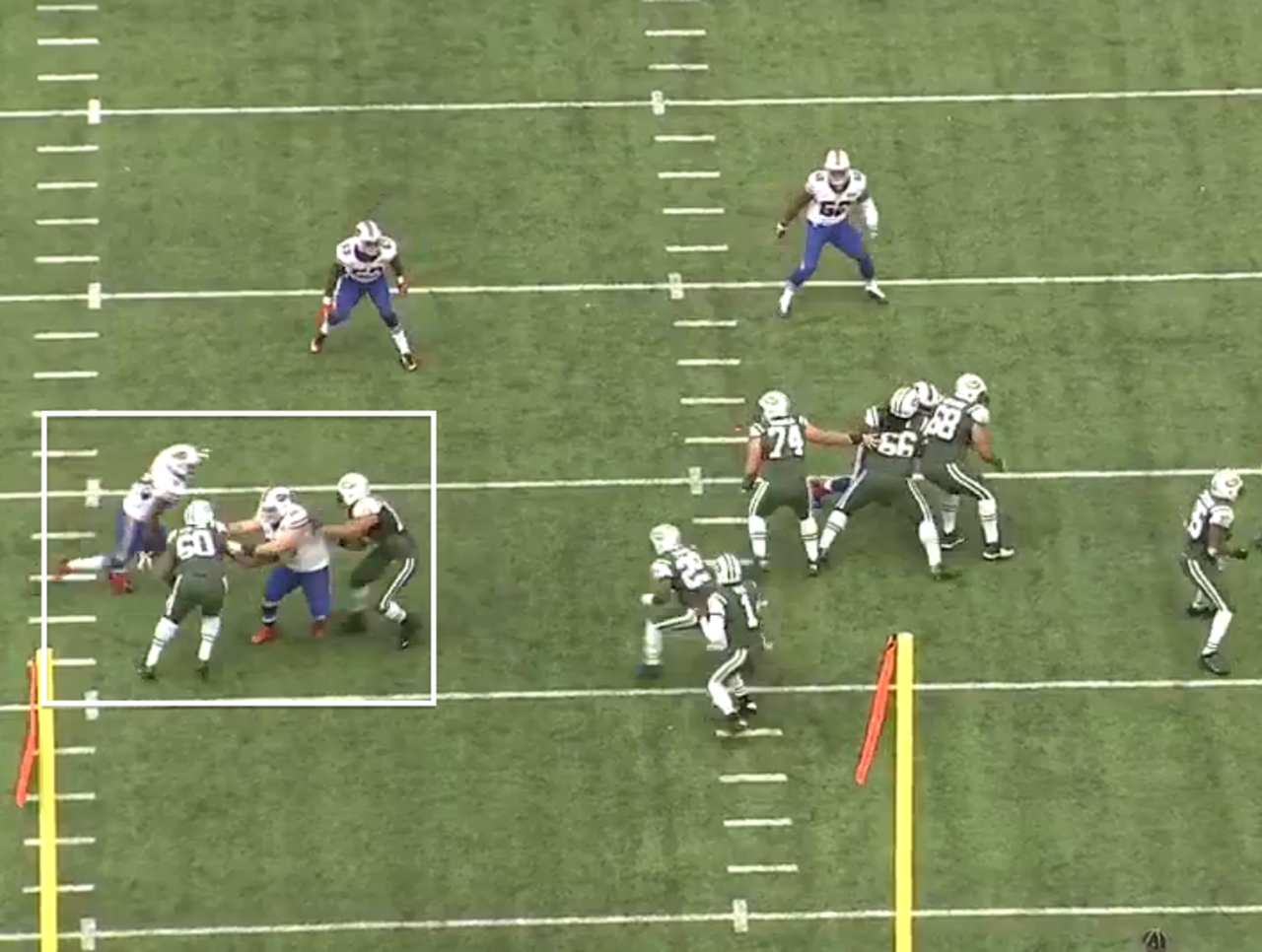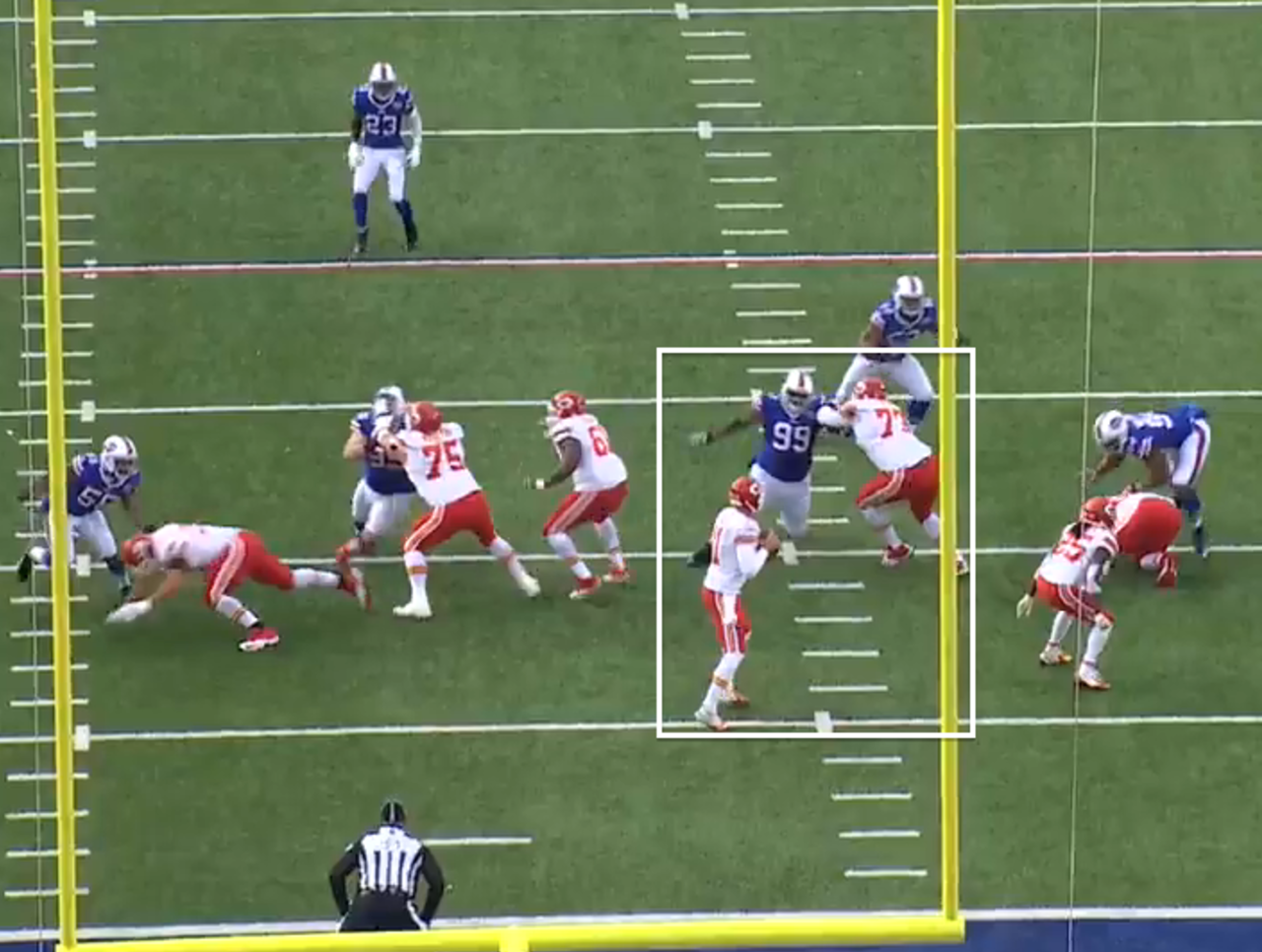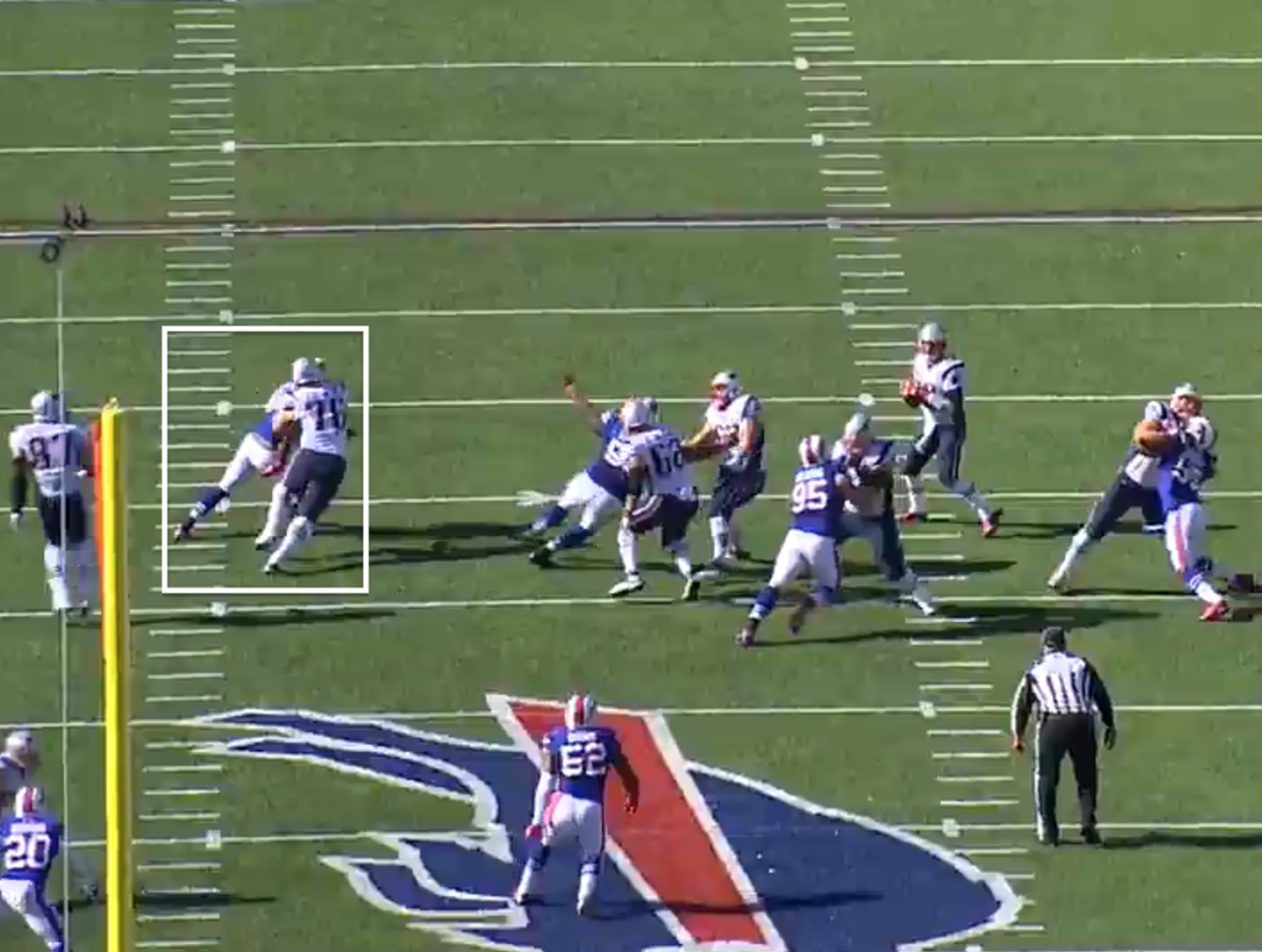Film Room: How Jim Schwartz's defense dominates with its front four
Jim Schwartz stood on the podium in a royal-blue polo. His goatee shone gray. It was his introductory press conference as the Buffalo Bills’ defensive coordinator, and his preamble had gone on too long. This was atypical. Schwartz had always kept opening remarks short and attacked pressers with ferocity, like his defenses attacked quarterbacks. He had to talk about his defense and, of course, he spoke broadly about it.
“We’re an attack scheme,” Schwartz said. “It’s a scheme built on the guys up front getting after the quarterback.”
Kyle Williams
Attacking quarterbacks starts from the inside, where Kyle Williams aligns. Williams is the pillar of the defense. At 31 years old, he is the oldest of the starting front four and has been in Buffalo the longest. He knows the city and the team, having been through the hard times with the Bills. He's had his own up and downs as well.
Before the 2006 NFL Draft, Williams finished a strong senior season at Louisiana State University, but at 6-foot-1, 295 pounds, he wasn't an ideal nose tackle. He slid to the Bills in the fifth round.
He made his way into the rotation early by working hard, recognizing blocking schemes, and improving his technique. He started 11 games his rookie season and has been a mainstay ever since.
This season, he’s accumulated eight quarterback hits, the most at his position, and 16 quarterback hurries, fourth-most at his position, per Pro Football Focus. He also has three sacks, one of which came against the division rival New York Jets in Week 8.
On third-and-5, Williams lined up at the three-technique over the left guard’s outside shoulder and teed off. He shot into the B-gap to his right, between the guard and left tackle, and kept his head forward until he locked arms with the guard. Once he did, he looked away to the tackle. That signaled a stunt to the outside linebacker, who looped behind him.

The guard and tackle didn’t communicate a swap of responsibilities, and when the guard let Williams go, the tackle wasn’t ready. Williams took advantage and extended his arms to punch the tackle and keep him distanced. It also allowed him to propel himself back toward the middle, behind the guard, and slam the quarterback to strip him of the ball.
His hard work paid off again.
Marcell Dareus
It was hard to believe that Marcell Dareus would slack off early in his career. In 2011, he was the best defensive lineman at Alabama, even in the country. He was relentless on every play, dominating blockers with strength, power and speed. It culminated in the best - and final - performance of his college career in the Capital One Bowl against Michigan State, when he recorded a sack, two tackles for loss and three quarterback hurries.
Soon after, the Bills selected him No. 3 overall to pair him in the middle with Williams, who outworked Dareus. It showed in the middle of games, play after play. It showed at the facilities, when he arrived to team meetings late twice in 2013. It showed off the field, when he was arrested twice in the 2014 offseason.
For all his talent and production, Dareus was on a downward spiral.
When the 2014 season started, he suddenly became more dedicated to the team and his craft. He started to consistently make big plays that were reminiscent of his Alabama days. He has 10 sacks this season, fourth-most in the NFL, and 12 hurries, per Pro Football Focus. He’s played all over the line of scrimmage, lining up at end, under tackle and nose tackle.
One of his most dominant plays came on a Week 10 sack against the Kansas City Chiefs.
When the Chiefs attempted a quick three-step drop on second-and-8, Dareus was over the right guard at the three-technique. The guard stepped back with his right leg, slid to his right and expected an outside rush, but Dareus blew by with a quick inside step. He stuck his left arm out and crowbarred the guard, using it as leverage to square his hips.

Dareus then raised his right arm to free and balance himself like he was tight-roping as he barreled down on the quarterback, Three steps later, he grabbed the quarterback by the neck and threw him down onto his back for his second sack of the game, showing off a penchant for rushing the passer.
Mario Williams
Rushing the passer was what the Bills paid Mario Williams to do in 2012. He received a base value of $96 million, with $50 million guaranteed in the richest contract ever for a defensive player.
Mario brought pressure from the edge, funneling quarterbacks into teeth of the pocket. He dominated offensive tackles with the same kind of skills that the Houston Texans saw when they drafted him in 2006, the same year the Bills found Kyle Williams.
On one play this season, he showed off all his talents en route to a sack against the New England Patriots in Week 6.
Mario was at strong-side outside linebacker, outside a tight end in the nine technique, when the ball snapped. He suddenly faced two pass blockers; the tight end chipped him, who he threw off with his long arms and left him one-on-one with the tackle.

He sped by the slow-footed tackle and dipped his shoulder, turned the corner and squared his hips to beeline after the quarterback. The quarterback stepped up, however, and climbed the pocket. Williams continued after him and circled in the backfield, ultimately pushing him down on his fourth full sack of the season.
Through 10 weeks now, Mario has 6.5 sacks and is tied for the team lead with 20 quarterback hurries, per Pro Football Focus. He’s played both end and outside linebacker in Schwartz’s scheme, dominating offensive tackles with endless length, overpowering hands and surprising quickness for a 6-foot-6 man, even after all these years. He’s also played in 41 straight games, staying healthy after missing 14 games in his final two years with the Texans.
Jerry Hughes
In three years, Jerry Hughes started only seven games with the Indianapolis Colts. They drafted him to become the next speed rusher once veteran Dwight Freeney retired, and he barely played. When he did play, he barely produced. He had a total of five sacks. The former first-round pick was deemed a bust.
The Colts traded him to Buffalo in a straight player-for-player swap for an inside linebacker who wasn’t nearly as talented, yet more productive. It was troubling. It was inexplicable that an athletic rusher, whose first three steps were each faster than the last, couldn’t get on the field. Now his original team didn't want him.
The Bills needed him. They needed a situational rusher who could speed rush all day and force quarterbacks up the pocket. Hughes could do that, and he could also do more than just rush wide.
On first-and-6 in the red zone, Hughes lined up at weak-side outside linebacker, wide of the Minnesota Vikings' left tackle in Week 7. As he waited for the snap, he rocked back and forth.
When the play began, Hughes took his first step outside. The tackle kick-slid out and expected a speed rush. On his second step, Hughes shook his shoulders and hips, frazzling the tackle, who overextended himself outside.

It widened the gap between him and the left guard, and Hughes explosively cut through the gap on his third step to gore the quarterback with his left shoulder.
The sack was what the Colts expected to see from their former first-round pick. They didn’t play him, though. The Bills have, benefiting by getting 17.5 sacks in two years from Hughes, including 7.5 this season.
---
Each of the front four defensive linemen had questions to answer when they came to Buffalo. And when Schwartz was hired as defensive coordinator, he had questions to answer, too.
He wouldn’t reveal much at the time of his presser, but the truth is the Bills defense hasn’t been much different philosophically than his Tennessee Titans and Detroit Lions defenses. They don’t blitz often. If they do, it’s usually with a linebacker or a safety from an eight-man box. They also funnel plays to the middle of the field, where Schwartz’s best players are.
It’s where his front four has helped the defense attack quarterbacks for a league-leading 34 sacks.